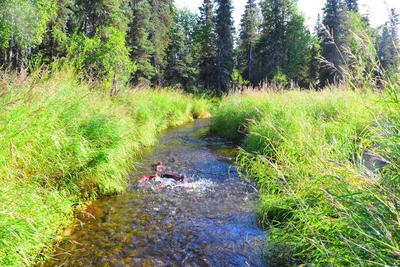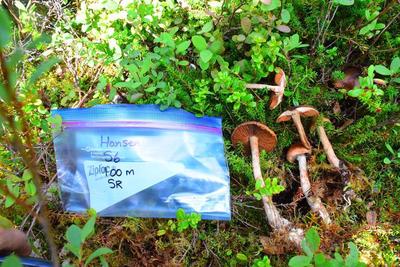Mapping fungal communities in salmon forests
Fungal communities have rarely been examined in riparian systems, especially fungi associated with salmon. I examined fungal communities near salmon-bearing streams along a natural nitrogen gradient and in response to an in-situ salmon carcass manipulation, and identified fungal communities associated with salmon.
I found that salmon altered fungal communities, and effects on community structure varied with spatiotemporal scale. Short-term, nearby decomposing carcasses increased the richness and diversity of saprotrophic fungi, and also increased the relative abundance and diversity of long-distance and medium-distance ectomycorrhizal fungal species. A multi-decadal, long-term carcass deposition experiment increased the relative abundance, richness, and diversity of long-distance ectomycorrhizal fungi, yet decreased the richness and diversity of short-distance ectomycorrhizal fungi. Long-distance fungal foragers can maintain a large network structure and efficiently mine nutrient hotspots, particularly phosphorus, likely limiting in this system. These fungi are also especially effective with pulsed nutrient additions that creates resource spatio-temporal heterogeneity, such as salmon inputs. Many long-distance types are in global decline, suggesting that preserving salmon habitat and salmon populations might be important for the conservation of genetically significant and threatened long-distance fungal taxa in these areas, as well as for promoting carcass-associated saprotrophic fungal taxa.

